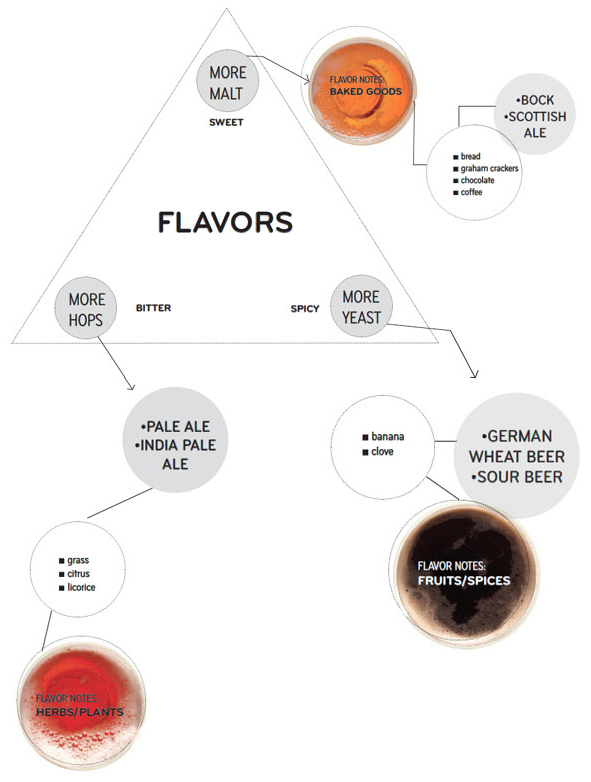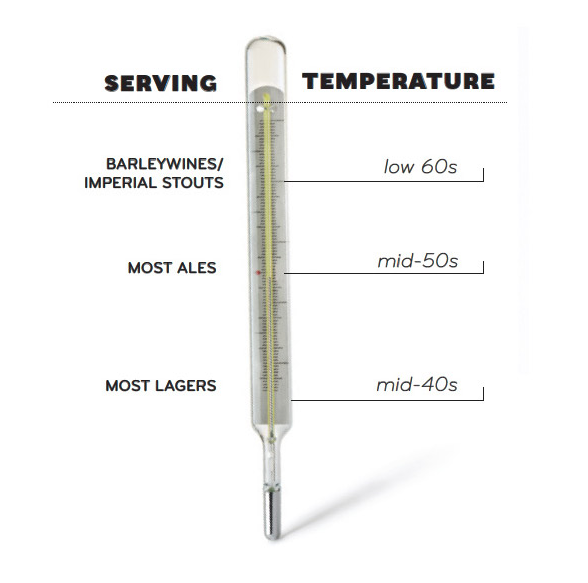Good beer is back with a vengeance! Thanks to the craft beer explosion, now is the perfect time to reintroduce yourself to beer.
Today there are more breweries in the United States than at any time since the late 19th Century, with many more still to come. The brews they are crafting have as much complexity as the world’s best wines, if not more so.
Here are the basics for enjoying your next cold one!
Hand Full of Ingredients
Beer is made of four basic ingredients. Each of these ingredients contributes flavor and aroma of beer: malt, yeast, hops, and water.


Every beer displays the character of all these ingredients to lesser or greater degrees. Beer styles are determined by the intensity of each ingredient relative to the others.
Beer Flavor Triangle
Some beers are heavier in malt, which we cicerones (the beer equivalent to a sommelier to wine) call malt forward. Others showcase hops (known as hoppy beers) or yeast (which we call yeast forward).

There millions of combinations of these ingredients. Add spices, honey, fruit, or any of the other additional tools in the brewer’s kit and the possibilities for creating unique beer flavors are literally endless.
Ale vs. Lager
It is generally agreed that there are two broad subcategories of beer, ale and lager. The main difference between the two is the type of yeast used to ferment them.
Ale yeasts ferment at warmer temperatures (between 60 and 75°F) compared to the colder fermentation temps of lager yeasts (45 to 55°F).
The warmer fermentation of ale promotes the production of flavor and aromatic compounds, while the colder lager fermentation inhibits them. This is why lagers tend to have a crisper cleaner profile and ales are more fruity and spicy in flavor. Beyond these differences associated with yeast, the full range of beer flavors is available to both ales and lagers.
Beyond Light to Dark
Beer styles fall on a spectrum of flavor intensity from lighter to stronger.
Many think that flavor intensity corresponds to color: Light colored beers are light and darker beers are heavy. Wrong! Color really tells you little about the intensity of flavor in a beer.
A Belgian tripel looks very much like a pilsner, but 9% alcohol and the funky flavors of Belgian yeast make it significantly more intense. The black lagers of Germany are as dark as coffee, but drink more like a pilsner than a stout, with just a dash of roast.
Blond ales and golden lagers like pilsners fall on the lighter end of the scale. At the other end you find the big and brawny barley wines and imperial stouts, along with the tart and funky Belgian sour beers. Beers at this end tend to be higher in alcohol, but that’s not always the case.
In between, beers run up the scale from the luscious, caramel-tinged amber and Scottish ales to brightly bitter pale ales and rich, roasty porters and stouts.
Ideal Temperature
Ice cold is how Americans like their beer, but American-style lagers aside, that is not the best way to enjoy a finely crafted brew. Why?
The colder something is, the less you can taste it. And that includes beer!
The deep-freeze numbs your taste buds. When beer gets too cold the malty goodness disappears. Hop bitterness becomes more intense, harsh and unpleasant. To keep the correct balance, drink your lager beers at around 48°F and your ales at “cellar temperature,” around 55°F.

Glass, Bottle, or Can?
Finally, be sure to pour that beer into a glass. Most of what we taste actually comes from what we smell. If you drink straight from the can or bottle you can’t smell anything. You’re cutting yourself off from three-quarters of the total beer experience.
A simple pint glass is fine for most beers, although a tulip glass or snifter will better serve those high-alcohol and highly aromatic beers like barley wines and Belgians.
